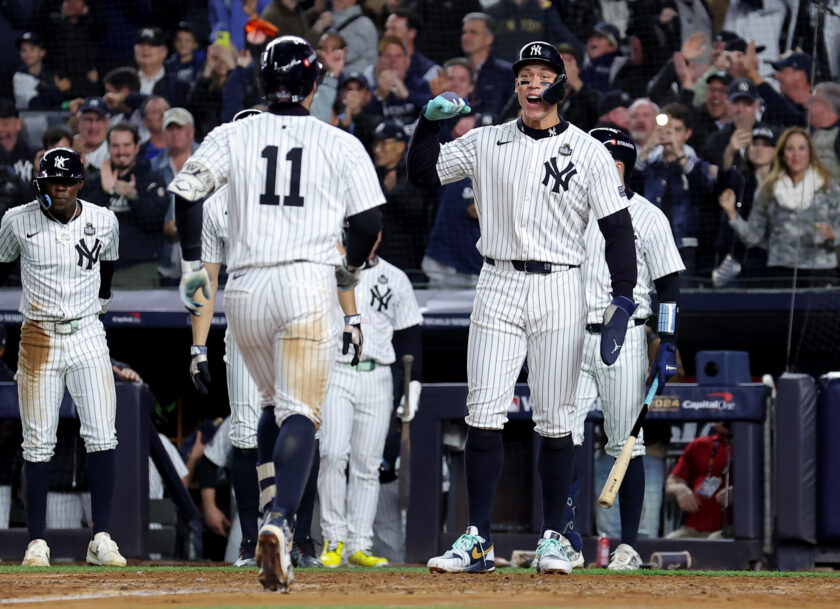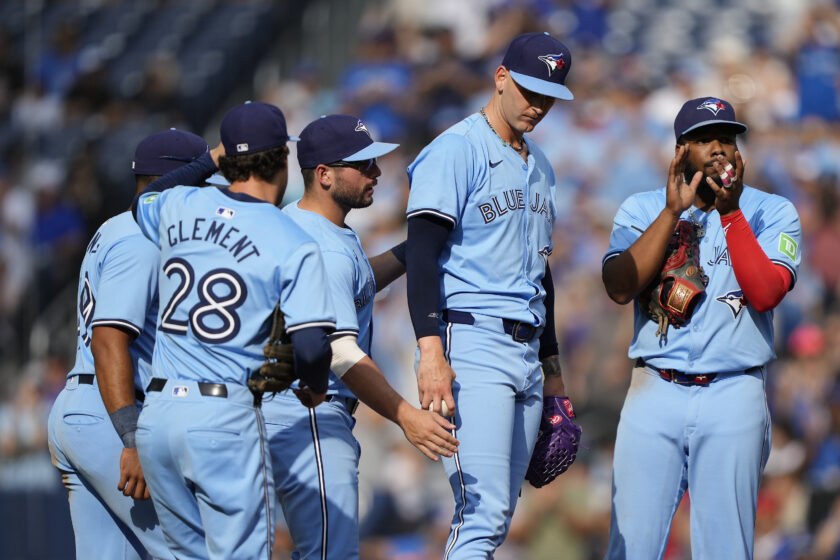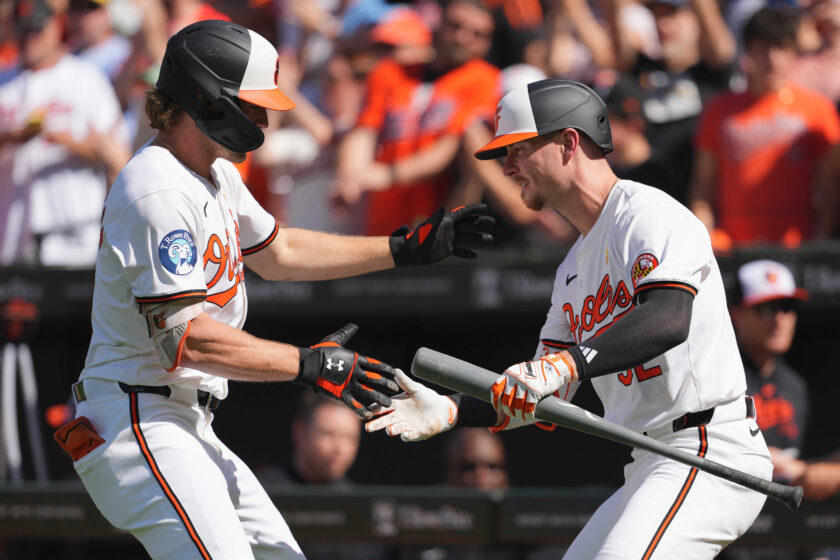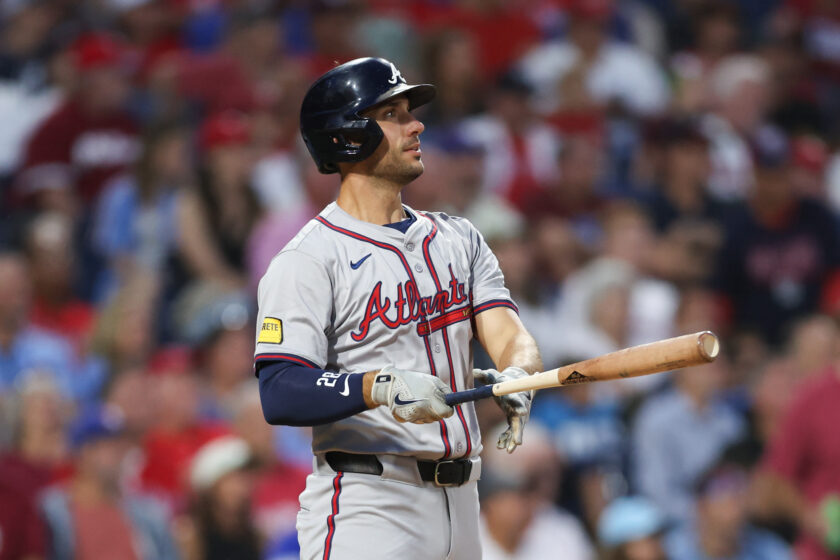Virtual NASCAR racing allows America to feel normal again

NASCAR’s pixelated endeavor, broadcasted on FS1, undoubtedly helped a beleaguered nation feel normal again, if only for a short while.
[sc name=”geoff-magliocchetti-banner” ]Much like an injury to a star player, the value and necessity of sports have been on the most prominent display in their absence.
It’s possible to acknowledge the gravity of the COVID-19 situation while also longing for the lost way of life we might’ve taken for granted as a nation. Sports provided a sense of normalcy, an opportunity to be passionate about something without having anyone take a personal offense to it.

It might take a while, but sports will be back. And when it does, we’ll appreciate things like Thursday Night Football, LaVar Ball’s rants, and paying $35 to park. Well, maybe complaints are still valid in some areas, but we, the sports-loving public, will surely raise fewer qualms.
The lack of sports has given rise to unerasable evils. A tidal wave of falsehood and fear has arisen in the wake of the pandemic, some of it fueled by otherwise reputable sources. If there was ever a time we needed the healthy distraction of sports, it’s now. Public health and safety obviously must be a priority, and sports networks and personalities have done what they could to pick up the slack. But replays of NCAA Basketball Tournament classics can only go so far.
Relief, albeit temporary, arrived on Sunday. It bore the acronym of NASCAR.
The National Association of Stock Car Auto Racing was among the final major leagues to halt its proceedings in the wake of the pandemic. One aspect of the series was still able to go on…the NASCAR iRacing Series. The subscription-based online racing simulator joined NASCAR in an esports partnership in 2009, one that continues to go strong and recently earned a sponsorship deal from Coca-Cola.
Like its sporting counterparts, NASCAR was mostly planning to get by with replays of classic events. However, in lieu of Sunday’s postponed event at Homestead-Miami Speedway, NASCAR, iRacing, and Fox Sports united to provide that much-needed distraction and levity.
Pixelated pistons took to a virtual version of Homestead, one that featured a sellout AI crowd. Drivers new and old would compete in iRacing setups almost tailor-made for social distancing. Thirty-five drivers would partake in Sunday’s event, spread out through NASCAR’s three major levels of Cup, Xfinity, and Truck series.
Legends of yesteryear, like Dale Earnhardt Jr. and Bobby Labonte, briefly ended their respective retirements to take to the track. Proceedings were broadcast live on FS1, and Fox’s top commentating crew of Mike Joy and Jeff Gordon had the call (at an appropriate distance, of course).
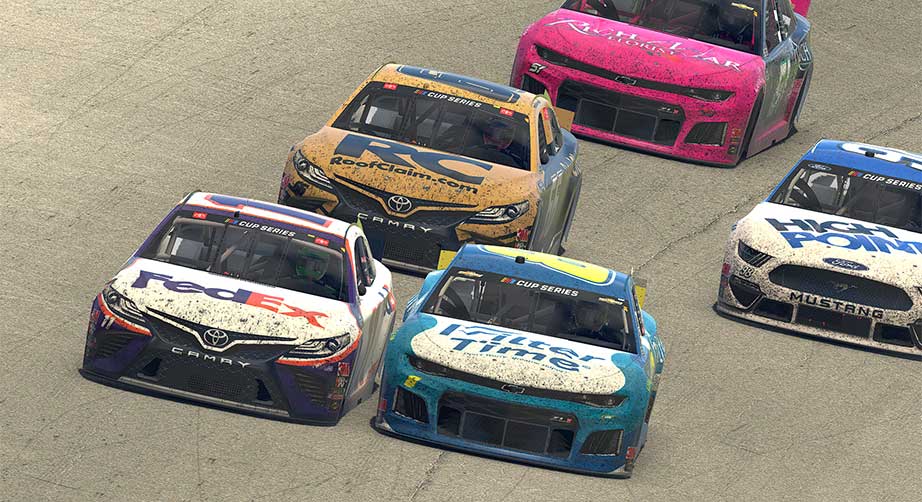
What ensued wasn’t perfect. Nearly half of the 100-lap race was under caution with several big wrecks removing renowned NASCAR names like Kurt Busch, Jimmie Johnson, and William Byron (who led the most laps on the afternoon). Whether it was real-life skills not transferring over to the video game, some of the laps looked like the real-life demolition derbies seen at the state fair.
But it’s what America needed. In that sense, perfection truly reigned.
For just over 100 minutes, there was time to briefly put aside the falsehoods and fear. There was time to smile, as Joy and Gordon (as well as in race competitor/commentator and Cup Series veteran Clint Bowyer) were able to speak of the virtual calamities with appropriate humor and levity without trashing life-saving precautions or turning the event into a parody.
Their exposition was helpful, and commentary over the thrilling final laps could’ve easily been taken from a real-life event they called in the past.
There was a time to come together. Sunday’s e-race began as the actual ones do, with an invocation from Motor Racing Outreach chaplain Billy Mauldin. The prayer, dedicated to those on the medical frontlines and those suffering from this traumatic experience. Country singer Dylan Scott sang the national anthem in his garage.
Once the racing got started, the quips flew and manageable chaos ensued. Alex Bowman, driver of the No. 88 Chevrolet in reality and cyberspace, joked he caused one of the day’s big wrecks because he let his dog run a few laps. Gordon playfully ripped on Bowyer for causing another one of the accidents and also spoke of the invisible pit stops that allowed competitors to get one “reset” (a full fixing of the car) during the race.
On the track, things couldn’t have worked out better. iRacing afforded an opportunity to see lower-budget drivers normally relegated to the back of the pack race up front and steal the spotlight.
Garrett Smithley and Timmy Hill (best Cup finishes of 28th and 14th respectively) battled for the lead in the final stages of the race before more familiar names took over. In seemingly downtrodden times, there was something downright inspiring and magical about seeing a pair of “start-and-park” drivers racing against, say, Labonte, the 2000 Cup Series champion.
But if underdogs had to be cast aside, the pixel fans were pleased that first place during the climactic stanzas came down to Earnhardt Jr. and Denny Hamlin. One was NASCAR’s idol for nearly two decades, the other has been of the series’ most consistent drivers. Between them, there are five victories in the Daytona 500, but no victory would probably be more important, at least in the short-term, than the one seen on Sunday.
In typical NASCAR fashion, there was bumping, grinding, colliding to the very end, as Hamlin and Earnhardt went side-by-side into the final turns. Hamlin bumped Earnhardt’s No. 8 Chevrolet in the final straightaway, giving him the win. Hill and Smithley would finish third and fifth respectively, sandwiching future Cup hopeful Chase Briscoe.
Perhaps the most unrealistic part of the proceedings was not the instant fix-ups, invisible pit crew members (pit crews aren’t rendered in iRacing games), or the idea of Bowman’s dog taking over the controls. It was the sound effects of the crowd cheering after Hamlin had the audacity to bump Junior out of the way.
For many in the real world, though, the familiar sight of Hamlin’s No. 11 FedEx-branded Toyota spinning victory donuts was just the perfect medicine.
For nearly two hours, there were no discussions about isolation, loneliness, or medical calamities. There were no debates about whether NASCAR was a sport, no arguments over the “GOAT.” There was only serenity at nearly 200 miles per hour.
NASCAR’s sense of giving was purely on display as well. A prayer, an anthem, briefly allowed a divided nation to reflect and be one. Hamlin’s victory ensured a $5,000 donation toward Miami-area virus victims (plus $100 each for the 14 laps he led). Dixie Vodka, the sponsor of the event, put in $10,000 more to The NASCAR Foundation.
Unity. Drama. Excitement. All the things one looks for in the perfect sporting event, and the perfect distraction for one of the most unusual, uncomfortable, uncertain times in our nation’s history. On a business level, it’s implied that these pixelated races will continue. Texas Motor Speedway, which was slated to host its race next weekend, will apparently get the video game treatment next.
America has some ways to go before fully recovering from these calamities. Politicians on every side of the aisle must come together at some point to serve their people and not themselves. Medical testing for this disease must become more prevalent and more organized. There are good, qualified people out on the frontlines in all areas working for our restored betterment.
NASCAR and iRacing obviously won’t solve it, not in Sunday’s event, nor in its future races. But it was a strong, positive, and necessary first step.
Geoff Magliocchetti is on Twitter @GeoffJMags

